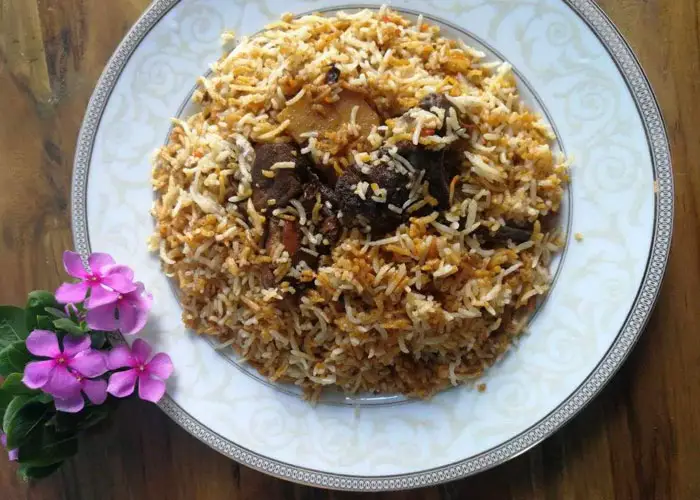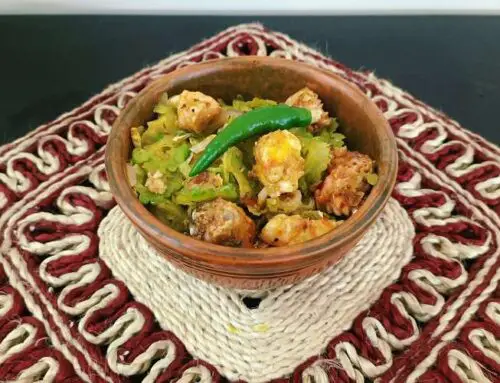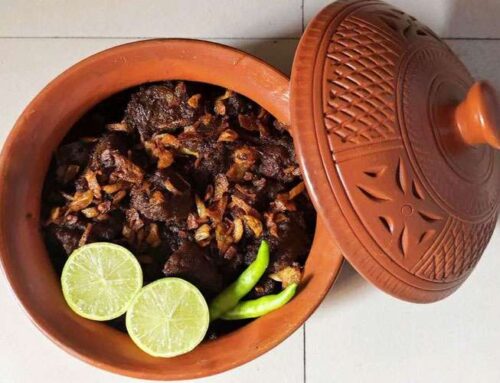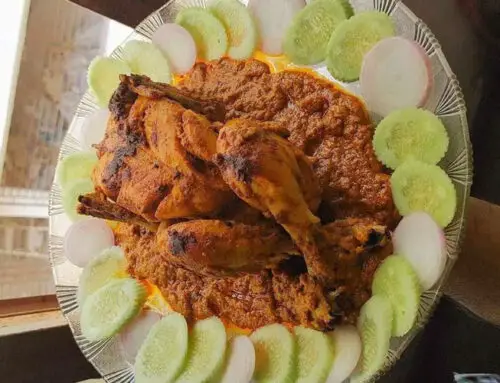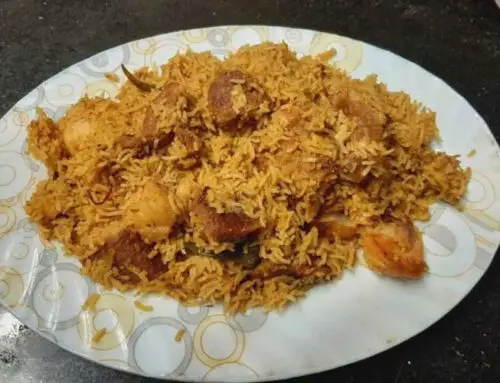Kacchi Biryani, a revered gem of Bengali cuisine, stands as a testament to the rich tapestry of flavors and traditions woven into every mouthful. Rooted in the heart of Bengal’s culinary heritage, this dish is a culmination of techniques and influences that have evolved over centuries.
The preparation of Kacchi Biryani is an art form in itself. The succulent pieces of marinated meat, often goat or mutton, are layered with fragrant Basmati rice and a medley of aromatic spices. The dish is then cooked “dum” style, where the ingredients are sealed in a pot to trap the flavors and allow them to meld into a symphony of taste and aroma. The slow cooking process infuses the rice with the essence of the meat and spices, resulting in each grain holding a story of its own.
Kacchi Biryani’s presence in Bengali weddings is as integral as the vows exchanged. It graces the tables as a symbol of celebration, uniting families and friends in a shared culinary experience. The process of preparing Kacchi Biryani for a wedding is an affair of love and devotion, with every step taken meticulously to ensure perfection. From marinating the meat to layering the rice and sealing the pot, each action is a labor of affection that echoes the sentiment of the occasion.
The significance of Kacchi Biryani in Bengali weddings is profound. It’s not merely a dish; it’s an embodiment of tradition, a representation of heritage that’s passed down through generations. The first spoonful of Biryani at a wedding doesn’t just gratify the taste buds, but also invokes a sense of nostalgia, connecting the present to the past.
As with any culinary masterpiece, the history of Biryani is a journey across cultures and continents. Originating in Persia, it found its way to India through the Mughal emperors. Over time, various regions embraced Biryani, infusing it with their own local ingredients and techniques. In Bengal, this dish underwent a transformation, evolving to suit the unique Bengali palate.
The essence of Kacchi Biryani lies not only in the ingredients but in the stories it carries. It’s a dish that reflects the warmth of Bengali hospitality, where guests are treated not just to a meal but to an experience. The aroma of the spices, the tender meat, and the fragrant rice all contribute to an immersive journey that awakens the senses and fosters a sense of togetherness.
In a world where cuisines evolve and blend, Kacchi Biryani remains a symbol of authenticity and tradition. Its presence in Bengali weddings is a testament to its cherished status – a dish so special that it is reserved for the most important and joyous occasions. With every bite, one not only experiences the flavors of the dish but also partakes in the legacy of a culture that holds its culinary traditions close to its heart.
In conclusion, Kacchi Biryani is more than just a dish; it’s a narrative of flavors, a testimony to tradition, and a celebration of togetherness. Its journey from Persia to the heart of Bengal is a testament to its adaptability and its ability to bridge cultures. As it graces the tables of Bengali weddings, it brings with it the essence of centuries-old customs and the promise of a deliciously unforgettable experience.
Kacchi Biriyani
In a narrative of the extended family, I have often witnessed the aromatic spectacle of my maternal grandmother’s cooking from up close. Growing up in old Dhaka, she possessed the tradition of lavishly hosting guests, who were not only welcomed into the house but also treated to an abundance of flavors. The charm of Dhaka’s heritage dwelled in having guests and indulging them with a bountiful feast.
Among the cherished dishes loved by the Dhaka residents, the Kacchi Biryani held a special place. My mother, an adept cook, also added her flair to the culinary tradition. The art of preparing meals with such flavors became a fascination for me as well.
Ingredients
- 1 kg Basmati rice
- 2 kg meat mutton
- 2 teaspoons garlic paste
- 1 ½ teaspoons ginger paste
- ½ cup yogurt curd
- 1 teaspoon papaya paste
- 2 ½ teaspoons Biryani masala
- 4 ½ teaspoons ghee
- 4-5 potatoes peeled
- 1 teaspoon green chilli paste
- 10-12 green chilies
- 2 teaspoons kewra water
- 1 teaspoon rose water optional
- 4-5 cardamom pods
- 2 cinnamon sticks ½ inch each
- 2-3 bay leaves
- nutmeg powder a pinch
- mace jayatri powder
- saffron soaked in water
- ½ cup ghee
- 3 tablespoons cooking oil
- coriander leaves optional
- aluminium foil paper
- salt to taste
Instructions
- Wash and soak the rice in water. (For Pulao rice, soak for 20-25 minutes. For Basmati rice, soak for 40-45 minutes)
- Strain the soaked rice and set aside.
- In the pot you'll use for cooking Biryani, marinate the meat with all the spices (except some of the green chilies, beresta, saffron, kewra water, rose water, boiled milk, cardamom, cinnamon, bay leaves, nutmeg, jayatri, and 5-6 green chilies).
- Heat ghee in a separate pot, add the rest of the green chilies, beresta, kewra water, rose water, saffron milk, cardamom, cinnamon, bay leaves, nutmeg, jayatri, and a small amount of ghee. Add rice and cook until 60% done. (Ensure the rice doesn't overcook.)
- Strain the rice and spread it over the marinated meat in the main pot.
- On top of the rice, spread the remaining green chilies, beresta, kewra water, rose water, saffron milk, and boiled milk.
- Seal the pot's mouth well with aluminium foil paper, ensuring no steam can escape from within. (If foil paper is not available, use dough to seal the lid onto the pot.)
- Steam the Biryani over low heat so that no steam can escape. (Steaming too much will not allow the meat to cook and the Biryani won't have the desired flavour.)
- After 45-50 minutes, turn off the heat and wait for an additional 5-10 minutes.
- Open the pot's lid. Gently mix the meat and rice together and serve, garnished with coriander leaves if desired.
Nutrition

